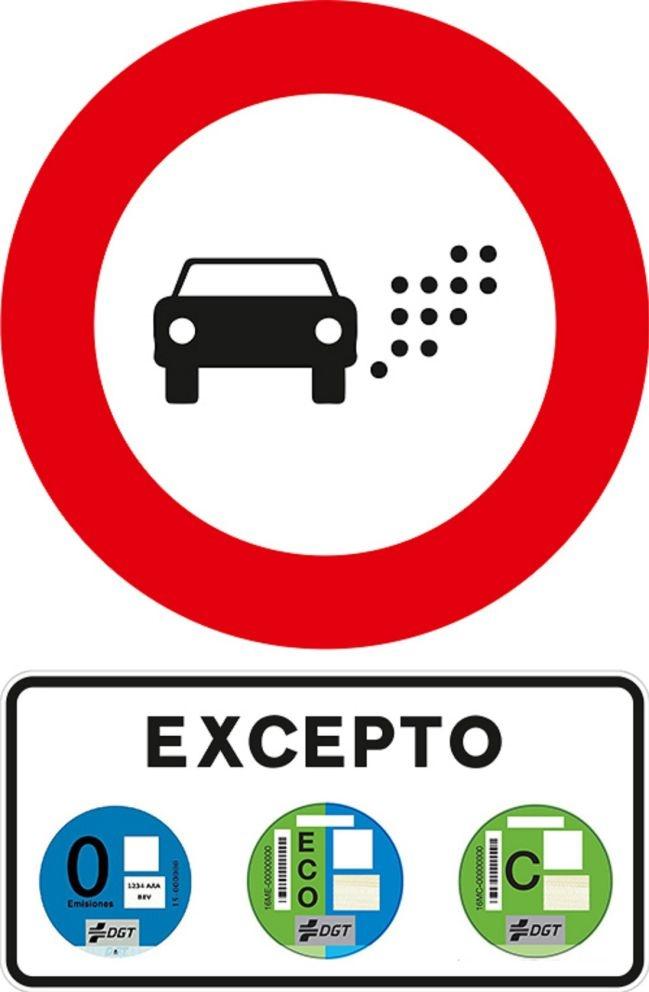
Driving in Spain - Low Emission Zones LEZs
Spanish Low Emission Zones LEZs - From January 1st, 2023 New low emissions zones are being introduced across 149 towns and cities.
LEZ rules affect all cities with more than 50,000 inhabitants as well as island territories and municipalities with more than 20,000 inhabitants with air quality harmful to health, currently there are 149 municipalities in Spain that are included in the LEZ rules.
The cities/towns in the Community of Valencia which have more than 50,000 inhabitants include - Alicante, Alcoi (Alicante), Benidorm (Alicante), Castellón de la Plana, Elche (Alicante), Elda (Alicante), Gandia (Valencia), Orihuela (Alicante), Paterna (Valencia), Sagunto ( Valencia), San Vicente del Raspeig (Alicante), Torrent (Valencia), Torrevieja (Alicante) and Valencia.
24th November 2023 - Updates for Benidorm - To comply with the climate change national law (Ley 7/2021)......which obliges all towns/cities of above 50,000 population to have areas of restricted access to higher polluting vehicles, Benidorm starts to operate its area from Jan 1st 2024. The area in Benidorm affected is of 74 hectares in the Poniente, Levante and the centre, and will be operated via an "App." Vehicles that have the relevant environmental sticker will be able to enter, as well as those without (As long as their registered residence on the town census..the padron.... within a restricted area.)
All will be run via an App, and there will be a trial period, which will run from Jan 1st, until after the summer according to the Mayor of Benidorm. The anti air pollution measures are national, and apply both to residents in Spain and visitors.
While this testing phase lasts, it is not expected that any type of sanction will be imposed until "everything is modulated".
General information
The new ZBE low emissions zones are fairly new to Spain and are being rolled out over the course of 2023. The rules are implemented by each municipality, under the broad framework of the DGT, so there is no one size fits all legislation. It is recommend that you check in advance with any municipality that you are thinking of visiting.
Each town hall must decide how to implement this, and traffic signs will be placed at the beginning of the zones to inform drivers, therefore if you have not seen any signs yet, it is because they are still planning where/if/how to do this.
The town halls are those that enforce and set fine levels, and it appears that they have decided on 200€ as the appropriate penalty for entering a zone without the relevant sticker. (The stickers are stuck on the inside of car windscreens, and are automatically read by camera) Zones are currently being set up in Benidorm, and are due to be fully operational by the end of this year. There are NO fully operational schemes at this moment in our province.
July 2023 - Here in Benidorm there is only a very small area where this is in place - The Poniente promenade which is predominantly residents only.
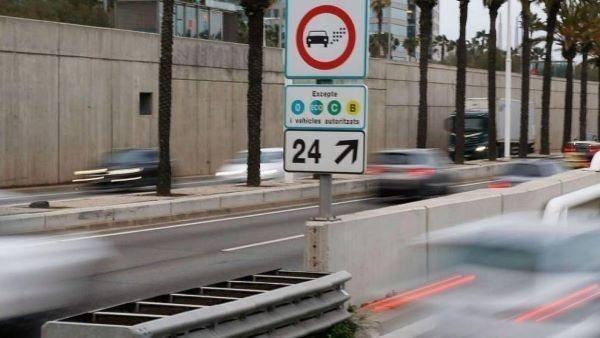
What are Low Emission Zones (LEZs)?
They are areas delimited by a public administration in which access and parking to certain vehicles is restricted according to their emissions, with the aim of improving air quality.
HOW TO OBTAIN AN EMISSIONS STICKER
You can obtain one of the new emissions stickers from a local gestoría or online via the Correos website but the easiest method is probably at a main Correos offices. Don’t worry if you don’t speak Spanish, just print off and fill out the attached form to take with you. You can also download it here:
https://www.correos.es/es/en/individuals/para-el-ciudadano/dgt-services/environmental-quality-seal
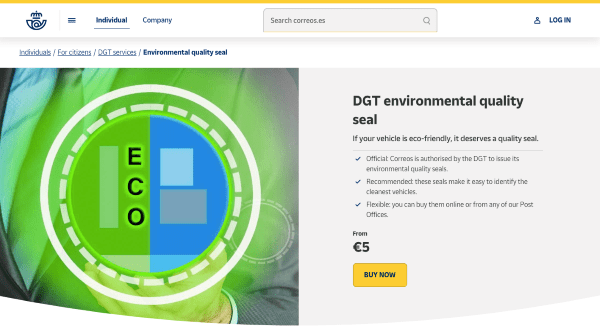

How much does the DGT sticker cost?
The environmental label of the DGT costs 5€, delivery fees can be an additional charge.
Does my vehicle qualify?
As a guide all electric, hybrid and gas powered vehicles, and petrol cars and light commercials that are EURO 4,5 or 6 along with diesel vehicles that are EURO 6 qualify for the environmental sticker.
You can check which sticker is a available for your vehicle here on the DGT website:
https://sede.dgt.gob.es/es/vehiculos/distintivo-ambiental
There are 4 categories available to cars and light vans as follows:
0 - BLUE - NO RESTRICTION
This category includes: Battery powered electric vehicles, extended range electric vehicles, plug in hybrid electric vehicles (PHEV) with an autonomous range of 40km or more, LPG vehicles and other gas powered vehicles.
ECO - GREEN / BLUE - SOME RESTRICTIONS
This category includes: non plug-in hybrids, hybrid electric vehicles (PHEV’s) with an autonomous range of less than 40 kms. There will be some restrictions to this type of vehicle, which will be determined by individual town halls.
C - GREEN - RESTRICTIONS
This covers petrol cars & light vans registered from 2006 onwards and diesel vehicles registered from 2014 onwards. Generally speaking category C vehicles cannot enter Low Emission Zones, although rules are implemented on a town by town basis so for example in Madrid, C category vehicles are allowed to enter some LEZ's to go to car parks etc.
B - YELLOW - NOT PERMITTED TO ENTER ZBE's
Petrol vehicles registered after January 2000 or diesel vehicles from 2006 to 2014 will be restricted from entering Low Emissions Zones.
❌ A - NO STICKER AVAILABLE - NOT PERMITTED
According to estimates, approximately 32% of cars & light vans will not be able to enter, due to the fact that they are too old to meet the strict emissions requirements and consequently do not qualify for a sticker.
Spanish Low Emission Zones
Where should the DGT sticker placed?
Sitting in the car looking out, the DGT sticker should be placed in the lower right corner of the windshield.
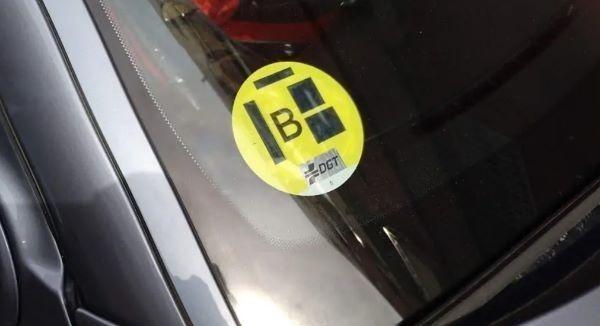
Is it mandatory to carry the DGT label?
You are not obliged to carry the environmental badge on the vehicle, since its placement is voluntary, but if it is not visible you will not be able to benefit from the advantages of having an Eco or Zero sticker, and you could be fined by the control cameras recognising your license plate number when entering these zones.
What fine does it entail irregularly entering an LEZ?
If you enter irregularly in an LEZ zone, the fine amounts to 200€, as according to the last reform of Traffic Law it is considered a serious infraction.
FOREIGN VEHICLES
Can a foreign vehicle obtain a New Environment Sticker? No, a foreign vehicle can not, but some may still be able to drive in one of the new low emission zones - If your vehicle already has an emissions sticker issued in its country of registration, then it may be able to be used, but you would need to check the corresponding Spanish emissions category for your vehicle.
Which countries are automatically accepted? EU countries whose emissions stickers are automatically accepted are Austria, Denmark, France and Germany, but it would be necessary to look for the corresponding Spanish emissions sticker to make sure they match.
What about UK Vehicles? At the time of writing, UK vehicles are not automatically accepted, and they are likely to have to be registered within the municipality where they are needed to be used. The only current example of this is Barcelona where the owner can register to use their vehicle.
As this is such a new system, we are sure there will be more information and updates available in the near future and the information above will be kept as up to date as possible.
Join us on Facebook or ask questions on BeeSer.

Why have car rental prices shot up in the past year?
Car Hire - Why have prices risen so much? There is a logical reason and it's not just the car hire firms being greedy.
Car hire prices this year have rocketed not just in Benidorm but throughout the rest of the world. Prices in most areas are now well in access of 40% more compared to pre pandemic prices. It would be easy to quickly blame the Car Hire companies for being greedy and trying to recuperate lost sales from the previous two summers. The truth is a little more complicated.
Pre Pandemic, car manufacturers used to have a great relationship with car hire companies - Car Hire companies created a demand for the latest models straight off the production lines and essentially provide prospective customers with test drives of the most recent models of various cars. Offering test drives has always been an important part of sales for any car manufacturer. Many customers enjoy the experience of driving a brand new hired car, and in turn then look for the same model when due to buy again. To be part of this obvious sales advantage, manufacturers were selling cars to hire firms at massive discounted prices. This discount was sufficient to enable the car hire firms to not only generate income from the hire of the car, but to actually make a profit (or at least a refund of the expenditure) from the re-sale of the car in post rental period.
The price of hiring a car therefore only needed to cover standard business expenses such as Staff wages, office costs etc. Remember the cost of maintenance would still mainly be covered under the warranty
This all changed with the Pandemic. The demand for car hire, collapsed with the tourist industry. No point hiring a car if there is a travel ban Instead most companies needed an injection of cash. This could only be achieved by reducing the size of their fleet and selling cars fast, in a market were the demand is not so high.
There was also a reduction in the demand for new cars coming off the production lines, not just from the hire companies, but from the public in general. This in turn has further knock on effects For example, Manufacturers of computer components essential to car production, turned their attention to making components for home computers were there was a higher demand with people working from home. This immediately slows down the production of new cars as the components become unavailable for long periods of time.
Car Hire Price Rises
The pandemic seems to be nearing an end, but now we have a new Crisis in Ukraine. Ukraine are one of the worlds biggest producers of car components. Those factory are not producing any products at the moment for obvious reasons.
The culmination of all of this is that any cars that are being produced at the moment, the manufacturers need to get the full price. No discounts for the hire companies and therefore no discounts for you as the hirer.
The hire companies now hire from a much smaller fleet of vehicles and need to attract the best prices possible for those vehicles. Increasing the fleet sizes is not an option as the car manufacturers cannot meet the demand. Some Car hire companies have already resorted to buying from the local dealers.
The situation is likely to improve again in the future as things slowly return to normal, but in the meantime it looks we have no choice but to accept that for your next holiday at least, the cost of hiring a car will be expensive
Our advice therefore is, if thinking of hiring a car it may be better to act fast as prices are more likely to rise than fall over the next few months. Select an option that allows a free cancellation should we be pleasantly surprised with unexpected reductions.
Join us on the Benidorm Seriously Facebook Group or ask questions at the Benidorm Social Club.
Looking for other travel information? Check out this section of the website
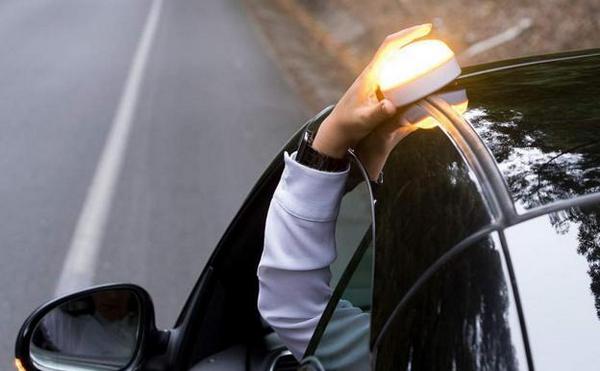
V-16 lights to replace emergency triangles - Driving in Spain
V-16 lights to replace emergency triangles - The DGT clarifies when the V-16 lights, which will replace the emergency triangles. After months of debate, from 1st July the V-16 lights will begin to replace the emergency triangles. This new signal is a device with an orange flashing light that must be placed on top of the vehicle to signal that you stopped on the road.
These V-16 lights will be able to be used instead of the triangles from July, but they will not become mandatory until 2026. From then, the only thing allowed to signal incidents will be these light signal that contain your geolocation.

The deputy deputy director of circulation of the DGT, Ana Blanco, already spoke about these a few months ago: "people become vulnerable" when they have to leave the vehicle to place the triangles, Jorge Ordás, deputy director general of Mobility Management and Technology of the DGT, also pointed to the high number of fatal accidents that occurred when drivers left their vehicles to place or pick up the triangles.
The new signage may be placed without leaving the vehicle. When we suffer a breakdown, it will be enough to lower the window and put the device on the roof, where it will be anchored with a magnetic anchor. In addition, the device will have a parabolic reflector with which the light will be visible within a radius of one kilometre, even in conditions of low visibility. You will not need cables as it works with battery and you can send a request for assistance when you have a connection with the drivers' mobiles.
The DGT has recalled that, in case of breakdown or accident, the new regulations dictate "as a general rule" that we will only leave the vehicle if there is a safe place outside the roadway, and always on the opposite side to the flow of traffic. If we are unable to exit safely, we will wait for assistance inside the vehicle with the seat belt on.
Join the Benidorm Seriously Facebook Group or for instant updates The Benidorm Social Club
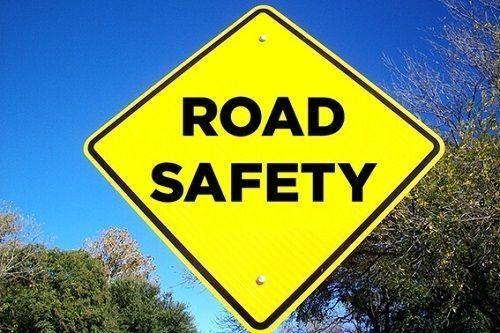
Changes to Road Traffic Rules from March 21st 2022
Changes to road traffic rules - The new traffic laws come into force on the 21st of March 2022. As of this date, drivers are subject to new regulations that they must be aware of, in order to avoid sanctions.
The 20 key points are listed below
Distractions: Handling a mobile while driving increases your penalty points two-fold, going from 3 to 6 points.
Seatbelts, helmets & CRS: Penalty points for not using these security systems or misusing them increases from 3 to 6 points.
Safety for cyclists: The penalty points are increased from 4 to 6 for overtaking them in a dangerous manner. Stopping or parking in cycle lanes is prohibited. It is now an obligation to occupy another lane when overtaking them.
Throwing objects on the road: If they can cause accidents or fires, the penalty points increases from 4 to 6 points.
Recover points on licences: Points will be regained after two years without committing offences.
Safe and efficient driving courses: 2 points can be recovered for taking safe and efficient driving courses.
Minors, alcohol and drugs: In all types of vehicles, the rate must be ZERO
Breathalyser tests for professional drivers: These may be carried out at the beginning of shifts and periodically / randomly throughout.
Anti-start breathalyser (Alcolock): Mandatory for passenger transport vehicles (July 6th, 2022).
Overtaking: Exceeding 20 km/h to overtake is removed.
Motorcyclists: The use of external wireless headsets for communication or navigation is authorized.
Restrictions in low emission zones. Breaching traffic restriction will be sanctioned with a 200 euros fine for the most polluting vehicles.
Cheating on driving tests. This action will be sanctioned with a 500 euro fine + 6 months without being able to test again.
Radar detectors and inhibitors: Their installation is sanctionable, even if they are not used.
Electric scooters: Helmets must be worn and they will be banned from traveling on the pavements.
Companies with drivers: They will be able to check if drivers have valid licences and points.
Failure to comply with regulations regarding public aid: These will be punishable with fines of 500 euros.
Sensitivity and awareness courses: Can be taught online.
Driving licences, logbooks and ITV - The DIGITAL certification will also be valid (miDGT app, etc.)
More information can be found on the DGT website
Changes to Road Traffic Rules
New Speed Limits from 11th May 2020
New speed Limits from 11th May - There are several changes in road safety that were approved at the end of last year at state level, those changes will take effect from May 11th.
Although not all the rules made by the DGT in November 2020 are not currently active, as is the case with the reduction of speed limits on urban roads. the new regulations for electric scooters came into effect at the beginning of January
The DGT remind us that from May 11th we will have new speed limits in place. These change that modified the General Regulation of Circulation through Royal Decree 970/2020, of November 10th, was published in the Official State Gazette (BOE) on November 11th.
The DGT points out that this deadline is set to allow citizens to come to terms with the new regulations, and for municipalities to adapt road signage.
The RDL of November 10th states that the "generic" speed limits on urban roads will be:
20 km / h on roads with a single carriageway and sidewalk platform.
30 km / h on single lane roads in each direction of travel.
50 km / h on roads with two or more lanes per traffic direction
Take into account that the lanes reserved for the circulation of certain vehicles or users, such as those used exclusively for public transport, are not counted. For example, if a street has one lane but also has one for bus / taxi, the 30 km / h limit will be applied since it is considered that there is only one lane for that direction. In the same way, the new regulations allow these new generic speeds to be reduced by the City Councils if they consider it, although they must first install the signs indicating the different limit. The Municipal Authority may also increase the speed on roads with a single lane in each direction, up to a maximum speed of 50 km / h.
Fines - How to check online for fines
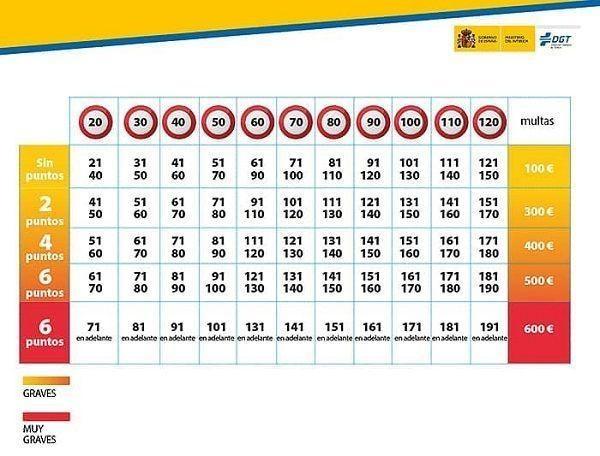
Research shows that, REDUCING THE SPEED IN A CITY FROM 50 KM / H TO 30 KM / H REDUCES THE RISK OF ACCIDENTS BY UP FIVE TIMES.
NEW SPEED CAMERAS IN BENIDORM
Be aware that Benidorm Council have already installed 9 new speed camera, round the town some of which are quite hidden.
These devices are placed on roads such as the Avenue of the Mediterranean, Beniardá, Alfonso Puchades and the roads of the Via Parque.
The council have sent a message to calm the public, assuring them that, for the time being, radars "will not be serving fines/sanctions for vehicles. People can rest easy, for now. With these radars we will be able to know how fast traffic circulates on average on each road, detect the most problematic points and be able to make decisions to slow traffic down in areas where the limits are un met. Later, if we see that people continue to exceed speed limits, you could start to get fined, but for now the answer is clear: no."
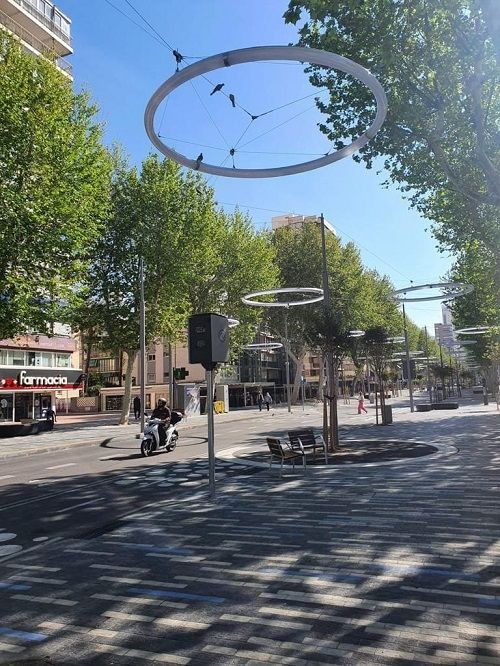
Above - Latest speed cameras in Benidorm
6th April - It seems even these are already causing concerns - Political mess over radars. Benidorm's PSOE has asked the PP's government team to suspend the commissioning of newly installed radars in different parts of the city. A measure that was raised by technicians on a Mobility Council where it received no criticism against it. For this reason, the Councilor of Mobility, José Ramón González de Zárate, accuses the opposition group of "demagoguery" and "having no word".
The boxes where those radars will go have started to be installed on Tuesday although they are not yet in operation. The Socialists have noted that "this is not the most appropriate time" to put in place sanctions-in-action measures, adding that "alternative formulas for speed control should besought." "Given the difficult situation that many of our neighbours are going through, we believe this is not the right time to implement this measure that can financially harm Benidorm families." They have also indicated that the installation of these radars can also affect tourists and visitors who come by vehicle to the city in the coming months.
Like or follow us on Facebook or join our own Social Chat here on the website for continual updates and news

Spanish Driving Rules - Overtaking Cyclists
Spanish Driving Rules Overtaking Cyclists - 27th January, Rules change for drivers overtaking cyclists. A ROAD Traffic Act reform means the way drivers are required to overtake cyclists has changed, with even more cautious measures set to come into force very soon.
The exact date on which the new rules will be effective has not yet been revealed, but motorists should act as though they are already in place as failing to do so once it becomes law could mean a €200 fine and three points deducted from your licence.
Here in Spain, driving licences start off with 12 points when 'clean', and points are deducted for motoring offences, with an automatic ban once all 12 have been used up – reinstating these normally requires paying for specified courses at official driving schools, as points-related offences are never 'spent' after a set time period.
Until now, drivers have been required to leave a margin of at least 1.5 metres (approximately five feet) when overtaking cyclists on roads, and are permitted to cross the central line, even if it is an unbroken white strip, to do so.
With the new rules the distance between car and bicycle when passing has increased to two metres (6'6”) and drivers must slow to at least 20 kilometres per hour below the speed limit. For example, on a road with a 50-kilometre limit, the driver must not overtake a bike-rider any faster than at 30 kilometres per hour, or on a main national highway where the limit is typically – but never higher than – 90 kilometres per hour, motorists should not go above 70 kilometres per hour when passing cyclist.
Crossing the central line and invading the opposite lane is permitted to enable the two-metre distance to be left. Drivers should not overtake cyclists at all where it would involve moving into the oncoming lane unless it is safe to do so, with no oncoming cars that may be forced to brake or have difficulty stopping in time.
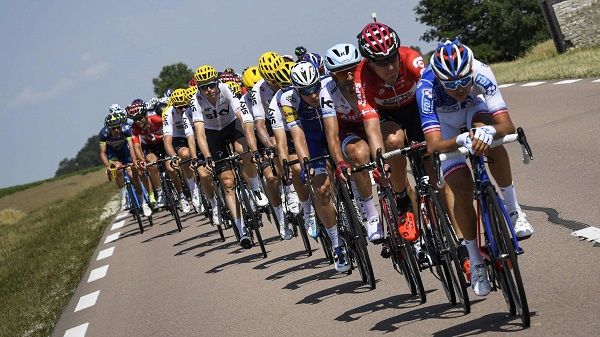
Head of Spain's General Directorate of Traffic (DGT), Pere Navarro, announced these measures in a conference organised by Executive Forum involving motorway franchise companies Abertis Autopistas and Indra. It forms part of a raft of reforms to the Road Traffic Law which are expected to come into force in the next few months, which include the number of points deducted from licences rising from three for driving with a mobile phone in one's hand to six, and not wearing a seatbelt, helmet on a motorbike, or with children not in the correct booster seats, to four.
Cyclists are some of the most vulnerable road-users, especially on fast-moving inter-provincial highways, and although motor vehicle crash death figures have generally been improving in the last few years, this is not the case with cyclists – last year, when fatality rates for all other types of road transport reduced, those of cyclists saw the smallest reduction, and in 2019, bicycle crash deaths actually increased.
For other Travel information check out this section of the website
For daily updates and local information join Benidorm Seriously on Facebook


